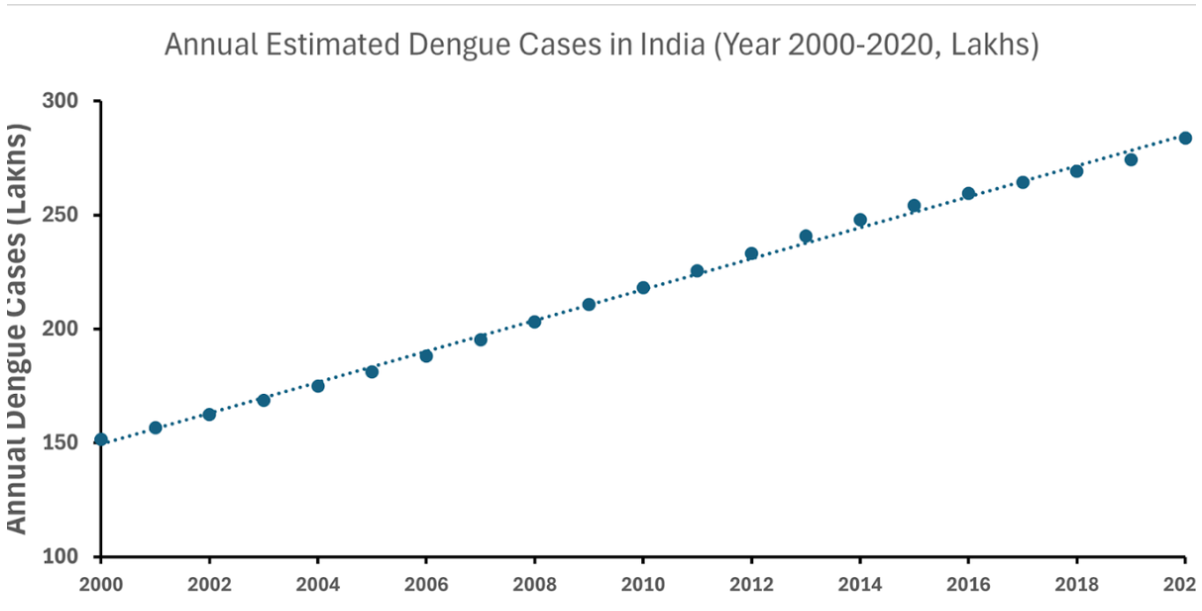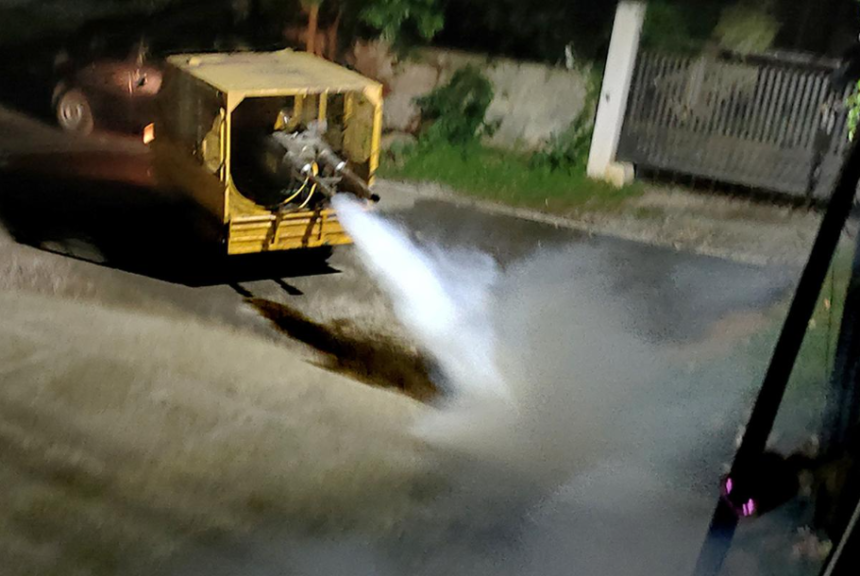Introduction
Mosquitoes Dengue, a mosquito-borne viral infection, has become a significant public health challenge in India. The Aedes aegypti mosquito, which also transmits chikungunya and Zika viruses, has been the primary vector responsible for these outbreaks. Despite various efforts to control the spread of these diseases, the battle against them remains largely unyielding. This is where innovative approaches like Wolbachia-infected mosquitoes come into play. Wolbachia, a naturally occurring bacterium found in many insect species, has shown promise in reducing the ability of mosquitoes to transmit viruses like dengue. However, despite its potential, the widespread implementation of this approach in India remains unrealized. This article explores the potential of Wolbachia-infected mosquitoes as a vector control strategy and the challenges that have hindered its adoption in India.
The Burden of Mosquito-Borne Diseases in India
Dengue and Other Aedes-Borne Diseases
Dengue has been a persistent public health issue in India, with the country reporting hundreds of thousands of cases annually. The disease causes flu-like symptoms, and in severe cases, it can lead to dengue hemorrhagic fever or dengue shock syndrome, both of which can be fatal. Chikungunya and Zika, though less prevalent, pose additional threats, particularly to vulnerable populations.
The economic burden of these diseases is substantial. Patients often require hospitalization, and the costs associated with medical care, lost productivity, and long-term disability can be overwhelming. Moreover, the recurrence of these outbreaks strains India’s already burdened healthcare system, highlighting the urgent need for effective control measures.
Current Control Measures and Their Limitations
Traditional methods of mosquito control, such as insecticide spraying, larviciding, and public awareness campaigns, have been the mainstay of India’s efforts to control Aedes mosquitoes. However, these methods have their limitations. Insecticide resistance is a growing problem, with mosquitoes evolving to withstand the chemicals used against them. Additionally, environmental concerns have arisen over the indiscriminate use of insecticides, which can harm non-target species and ecosystems.
Moreover, the effectiveness of these measures often depends on consistent community participation and government intervention. In densely populated urban areas, where Aedes mosquitoes thrive, maintaining such efforts at the necessary scale is challenging. As a result, despite decades of effort, dengue and other Aedes-borne diseases continue to pose significant public health threats. 
Wolbachia: A Novel Approach to Mosquito Control
Understanding Wolbachia
Wolbachia is a genus of bacteria that naturally infects many insect species. When Wolbachia is introduced into Aedes aegypti mosquitoes, it can interfere with the mosquito’s ability to transmit viruses like dengue, chikungunya, and Zika. There are several mechanisms by which Wolbachia achieves this, including reducing the lifespan of infected mosquitoes and blocking the replication of viruses within the mosquito’s body.
One of the most promising aspects of Wolbachia-based control is that it is self-sustaining. Once Wolbachia-infected mosquitoes are released into the environment, the bacterium spreads naturally through mosquito populations. This occurs because Wolbachia-infected females can pass the bacterium to their offspring, gradually replacing the local mosquito population with mosquitoes that are less capable of transmitting viruses.
Field Trials and Evidence of Effectiveness
Several field trials of Wolbachia-infected mosquitoes have been conducted around the world, with promising results. For example, trials in Australia, Indonesia, and Vietnam have shown significant reductions in the incidence of dengue in areas where Wolbachia-infected mosquitoes have been released. In these areas, the transmission of dengue has dropped by as much as 77%, providing strong evidence of the potential of this approach.
These successes have led to increased interest in Wolbachia as a vector control strategy. Organizations such as the World Mosquito Program (WMP) have been instrumental in advancing research and implementation efforts, working with governments and communities to deploy Wolbachia-infected mosquitoes in various parts of the world.
Challenges to Implementation in India
Regulatory and Ethical Considerations
One of the primary challenges to the widespread adoption of Wolbachia-infected mosquitoes in India is the regulatory environment. Introducing genetically modified or bacteria-infected organisms into the environment raises significant regulatory and ethical questions. Ensuring that Wolbachia-infected mosquitoes do not have unintended ecological consequences is a priority, requiring rigorous testing and oversight.
India’s regulatory framework for such innovations is complex, involving multiple agencies and layers of approval. Navigating this framework can be time-consuming and costly, potentially delaying the deployment of Wolbachia-based interventions. Additionally, public acceptance is critical, and the introduction of Wolbachia-infected mosquitoes must be accompanied by transparent communication and community engagement efforts.
Logistical and Financial Barriers
Implementing a Wolbachia-based mosquito control program on a large scale requires significant logistical and financial resources. The production of Wolbachia-infected mosquitoes needs to be scaled up to cover vast urban areas where Aedes mosquitoes are most prevalent. This involves establishing mosquito rearing facilities, ensuring the quality control of Wolbachia-infected mosquitoes, and coordinating large-scale releases.
Moreover, sustaining the program over time requires ongoing monitoring and evaluation to assess its impact and make necessary adjustments. Securing the funding needed to support these activities is a major challenge, particularly in resource-constrained settings. While international organizations and donors may provide initial support, long-term sustainability depends on domestic funding and political commitment.
Scientific and Technical Challenges
Although the evidence supporting Wolbachia is compelling, scientific and technical challenges remain. For instance, there is a need for more research to understand the long-term effects of Wolbachia on mosquito populations and the potential for the emergence of resistance. While Wolbachia is naturally occurring and not genetically modified, there are still questions about its interaction with other species and ecosystems.
Additionally, implementing Wolbachia-based control requires significant technical expertise. Training local personnel, ensuring accurate data collection, and maintaining the infrastructure needed for mosquito rearing and release are all essential components of a successful program. Building this capacity takes time and investment, which can be a barrier to rapid implementation.
The Potential Impact of Wolbachia in India
Reducing the Burden of Aedes-Borne Diseases
If successfully implemented, Wolbachia-infected mosquitoes could have a transformative impact on the control of dengue, chikungunya, and Zika in India. By reducing the ability of Aedes mosquitoes to transmit these viruses, Wolbachia has the potential to significantly reduce the incidence of these diseases. This would alleviate the burden on India’s healthcare system, reduce economic losses due to illness and disability, and improve the overall quality of life for millions of people.
A Model for Innovative Vector Control
The adoption of Wolbachia-infected mosquitoes could also serve as a model for other innovative vector control strategies in India. Success in this area could pave the way for the introduction of other novel approaches, such as genetically modified mosquitoes or new forms of insecticides. It could also inspire greater investment in research and development, leading to the discovery of new tools and techniques for combating vector-borne diseases.
Strengthening Public Health Infrastructure
Implementing Wolbachia-based control would require strengthening India’s public health infrastructure, particularly in areas related to vector control and disease surveillance. This could have broader benefits beyond the control of Aedes-borne diseases. Improved infrastructure could enhance India’s ability to respond to other public health challenges, such as malaria and emerging infectious diseases. Moreover, the skills and knowledge gained through Wolbachia implementation could be applied to other areas of public health, contributing to overall health system resilience.
The Way Forward
Building Political Will and Public Support
To realize the promise of Wolbachia-infected mosquitoes, strong political will and public support are essential. Policymakers must recognize the potential of this approach and allocate the necessary resources to support its implementation. This includes funding for research, infrastructure, and community engagement, as well as the development of clear regulatory frameworks.
Public support is equally important. Community engagement efforts should be prioritized to ensure that people understand the benefits of Wolbachia and are willing to participate in the program. This involves transparent communication, addressing any concerns or misconceptions, and involving local communities in decision-making processes.
Strengthening Partnerships and Collaboration
Collaboration between government agencies, research institutions, international organizations, and the private sector is critical to the success of Wolbachia-based control. Partnerships can help leverage resources, share expertise, and coordinate efforts across different levels of government and regions. International organizations, such as the World Health Organization (WHO) and the World Mosquito Program, can provide valuable technical support and guidance based on their experience in other countries.
Investing in Research and Development
Continued investment in research and development is necessary to address the scientific and technical challenges associated with Wolbachia. This includes funding for long-term studies to monitor the impact of Wolbachia on mosquito populations and disease transmission, as well as research into potential risks and mitigation strategies. Additionally, innovation in mosquito rearing and release techniques could help overcome logistical barriers and improve the efficiency of Wolbachia-based control programs.
Ensuring Sustainability
Ensuring the sustainability of Wolbachia-based control requires long-term planning and investment. This includes securing domestic funding, building local capacity, and integrating Wolbachia into broader public health strategies. Sustainability also involves monitoring and adapting the program over time, based on evidence of its effectiveness and any emerging challenges.
Conclusion
Wolbachia-infected mosquitoes represent a promising and innovative approach to controlling dengue, chikungunya, and Zika in India. Despite the challenges to implementation, the potential benefits of this approach are significant. By reducing the transmission of these diseases, Wolbachia could have a transformative impact on public health, reducing the burden on healthcare systems and improving the quality of life for millions of people. To realize this potential, India must invest in the necessary research, infrastructure, and community engagement efforts, while building strong partnerships and political support. With the right approach, Wolbachia could become a key tool in India’s fight against mosquito-borne diseases, helping to protect the health and well-being of its citizens for generations to come. ALSO READ:- India’s Potential in Embracing Progressive Capitalism: Insights from Joseph Stiglitz 2024





